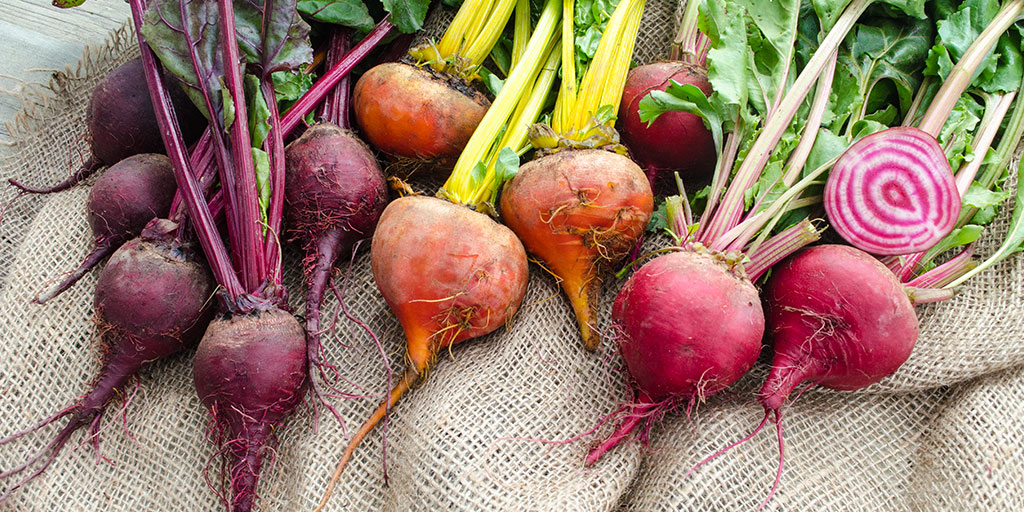Beets have long been a favorite among home gardeners, offering both visual appeal and culinary versatility. Whether it’s their deep, vibrant colors or the wide range of ways they can be enjoyed in the kitchen, beets are a vegetable that thrives in many gardens. For those looking to cultivate their own, beets are a fantastic crop to add, offering an opportunity to enhance both the garden and the dinner table.
Choosing the Right Beets for Your Garden
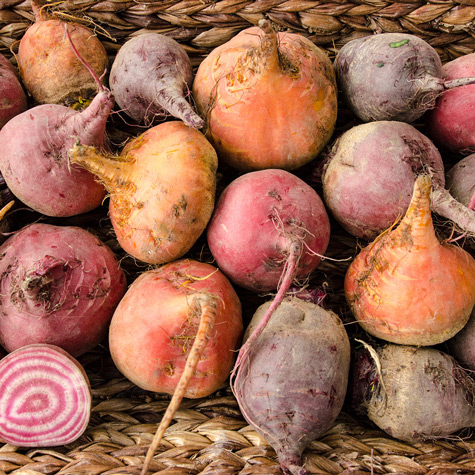
Before you start planting, it’s essential to choose the right beet varieties for your garden. Learn more about your planting zone here. Beets come in various shapes, colors, and sizes, each offering a unique flavor profile and visual appeal. Here are some popular beet varieties to consider:
Detroit Dark Red:
A classic choice, known for its deep red color and uniform shape. Detroit Beets are perfect for juicing, roasting, and pickling.
Golden Beets:
A vibrant yellow variety that’s slightly sweeter and won’t stain your hands or cutting boards. Our Bolder Beet variety features large, golden bulbs ideal for juicing, shredding, or roasting.
Chioggia Beets:
Chioggia Beets feature a red-and-white striped interior, making them great for fresh salads.
Forono Beets:
Forono Beets are a cylindrical beet variety ideal for slicing and work well in both cooked and raw dishes.
Preparing Your Soil for Beets
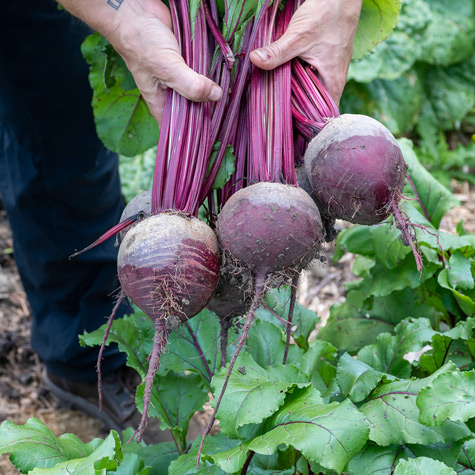
Beets grow best in well-drained, loamy soil that’s rich in organic matter. Start by clearing your garden bed of any rocks, debris, or compacted areas that could interfere with the development of the beetroot. Incorporating compost or aged manure can provide essential nutrients for healthy growth.
Beets prefer a neutral soil pH, around 6.0 to 7.0. Testing your soil before planting is crucial for optimal beet growth. If your soil is too acidic, you may need to amend it with lime to create a more balanced growing environment. Another important tip: Beets thrive in slightly cooler temperatures, so they are best grown in spring or fall.
Planting and Spacing Beets
Once your soil is prepared, it’s time to plant. Beets can be direct-seeded into the garden as soon as the soil temperature reaches 50°F, typically in early spring. For a fall crop, sow seeds in mid-to-late summer, about 8 to 10 weeks before the first frost.
Plant beet seeds about 1 inch deep and 2 to 3 inches apart, in rows spaced 12 inches apart. Since beet seeds are actually clusters containing multiple seeds, you’ll need to thin the seedlings once they sprout. This ensures that each beetroot has enough room to grow. To avoid disturbing nearby plants, pinch off excess seedlings rather than pulling them.
Caring for Your Beets

Beets can be low maintenance, but they do require some attention throughout the growing season. Keeping the soil consistently moist is critical for preventing beets from becoming tough or woody. Water deeply and regularly, especially during dry spells, but avoid overwatering, which can lead to rotting.
Mulching around your beet plants can help retain moisture and suppress weeds, both of which contribute to healthy, robust growth. Beets have shallow roots, so avoid heavy cultivation near the plants to prevent damage.
Fertilizing isn’t always necessary, but if your plants seem slow to grow, consider using a balanced fertilizer with low nitrogen. Too much nitrogen encourages leaf growth at the expense of the beetroot. We recommend our Root Crops Alive! fertilizer to use when planting beets.
Harvesting and Storing Beets
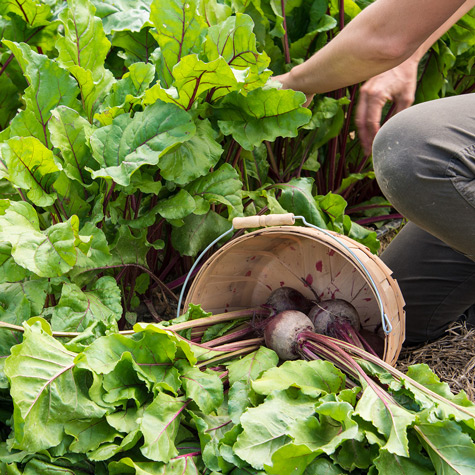
Patience is key when harvesting beets. Most varieties are ready to harvest in about 50 to 70 days, or when the roots reach the desired size, typically 1.5 to 3 inches in diameter. Larger beets can become tough and fibrous, so it’s better to harvest them while they’re still young and tender.
To harvest, gently lift the beet from the soil using a garden fork or your hands, being careful not to damage the roots. Be sure to also harvest the beet greens, which are edible and highly nutritious. You can enjoy them sautéed, added to salads, or even blend them into smoothies.
Beets can be stored in the refrigerator for up to a week, but for long-term storage, you may want to consider canning, pickling, or freezing them. Another option is to cure beets by leaving them in a cool, dry place for a few days. This allows their skin to toughen, extending their shelf life.
Why Grow Your Own Beets?
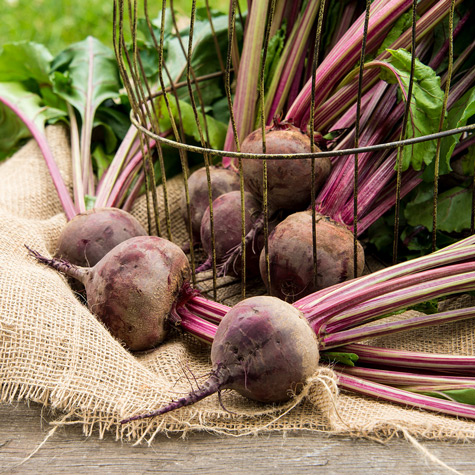
There’s something special about growing your own beets. Not only are they packed with nutrients like folic acid, potassium, and vitamin C, but they also offer a range of culinary possibilities. From roasting and pickling to juicing and sautéing, beets are as versatile as they are nutritious.
Growing your own beets also allows you to experiment with different varieties and discover the flavors and textures you love most. Plus, the vibrant colors of beets can add a striking element to your garden, whether you’re growing classic red varieties or trying out golden and striped beets.
If you’re looking to get started with beets, Gurney’s offers a great selection of seeds to choose from, ensuring you’ll find the perfect variety for your garden. Happy planting!

